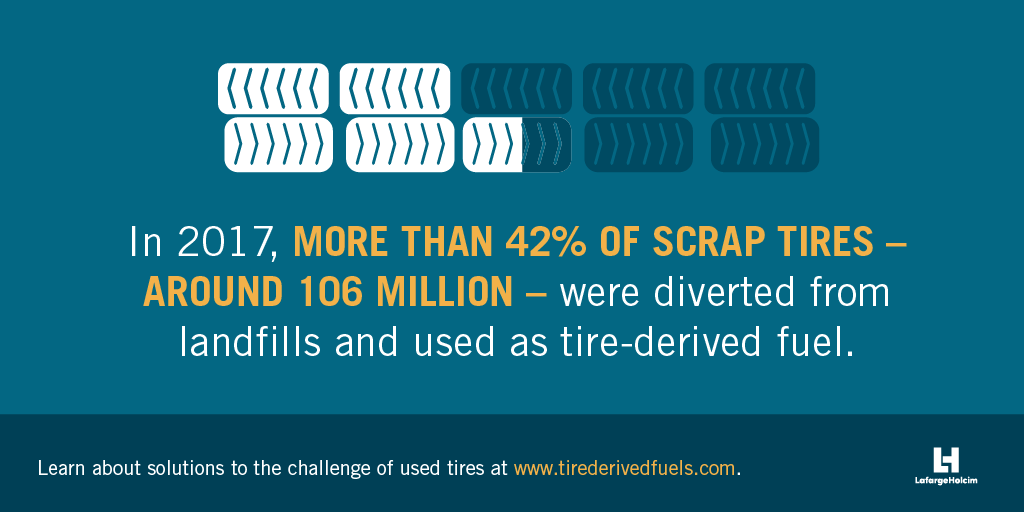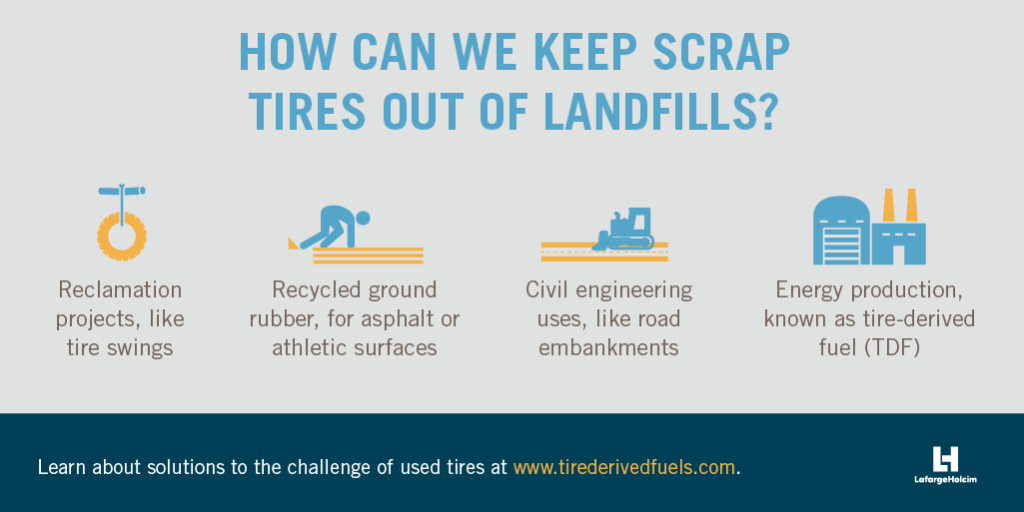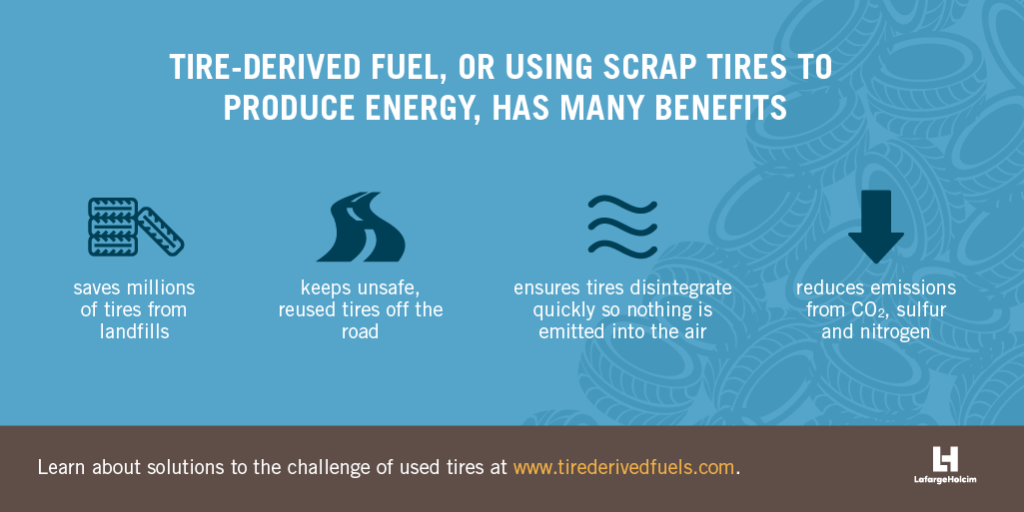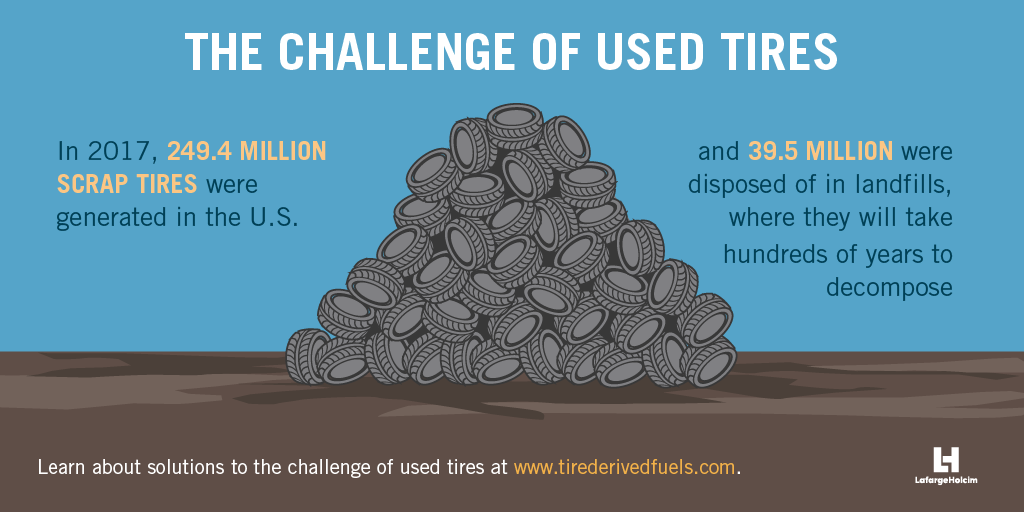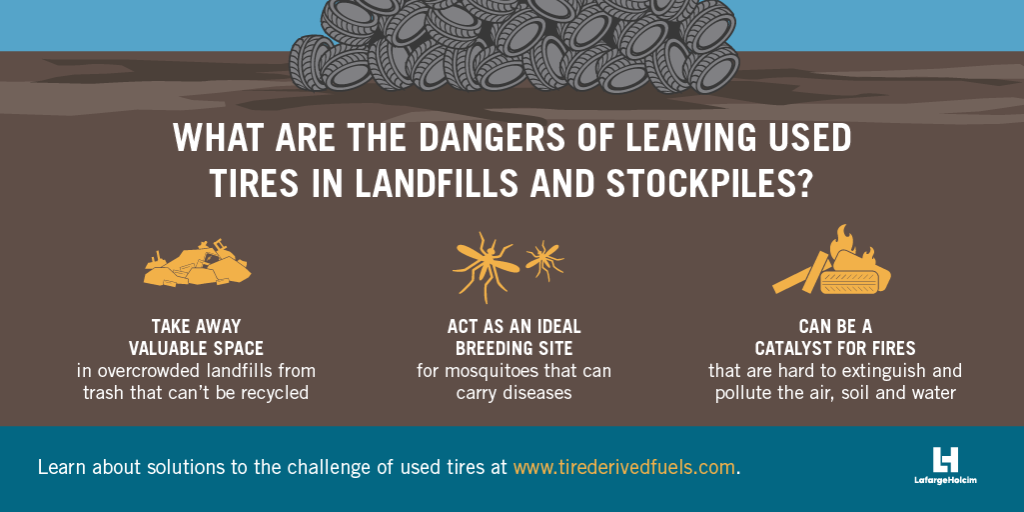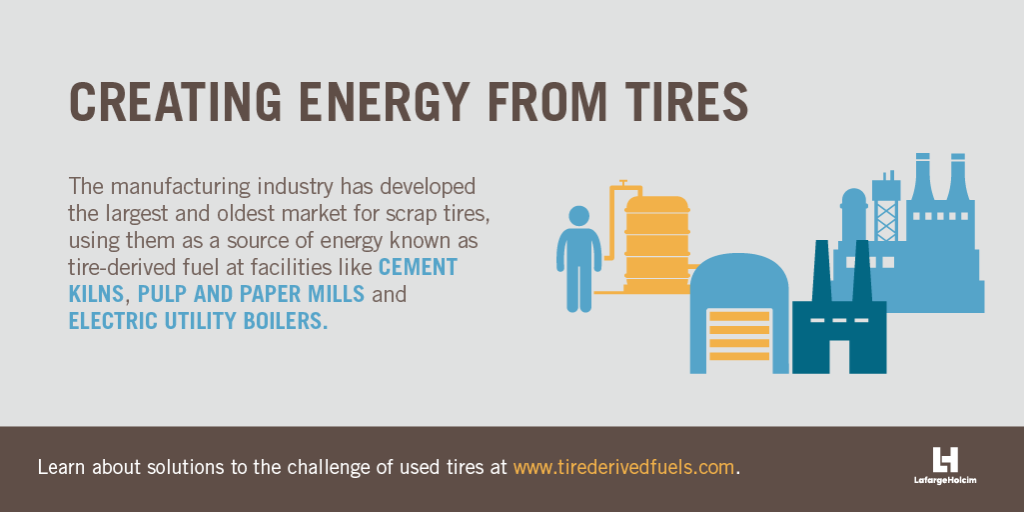The recycling and reuse of scrap tires is an integral part of reducing the environmental footprint. Using methods like tire-derived fuel (TDF) are one way to help deliver sustainable solutions to protect the world for future generations.
Many used tires today are dumped into landfills or left in stockpiles. In 2019, 41.5 million tires were disposed of in landfills, where they will take hundreds of years to decompose.







